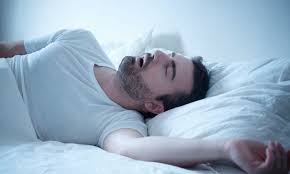Obstructive Sleep Apnea device: Alternative to CPAP device
The goal of sleep apnea treatment is to open your airway so you can breathe better at night. Many devices can help that happen. Among the most common options are CPAP machines, mouth appliances, and specially designed pillows. Are you wondering about your ‘Sleep Apnea device ’, mentioned below are some points about its alternative.
Mouth Devices
You can get these custom-made or buy them over the counter. Whatever type you choose, you’ll need to see a dentist to have it fitted.
Mandibular advancement device (MAD). This looks like a mouth guard that athletes wear. It snaps over your top and bottom teeth. Hinges let your lower jaw ease forward, which keeps your tongue and soft palate stable so your airway stays open while you’re asleep.
Tongue retaining device. This is sort of like a splint that holds your tongue in place to keep your airway open. Doctors don’t prescribe it as often as the MAD. It can be harder to get used to and less comfortable. You can also buy a “boil and bite'' device over the counter or online. You heat it in hot water, then bite into it to make it fit your mouth. The aim is to move your lower jaw forward to improve your breathing. These devices may not work as well as the custom-made ones. Researchers in Europe studied 35 people with mild sleep apnea. Some used custom-made devices and others used the ''boil and bite" products. Only the custom-made ones reduced the average number of apnea problems per hour. Before you buy a mouth device, talk to your doctor about which one would be best for you.
Position Pillows
Do a quick online search, and you’ll find many types of pillows to relieve sleep apnea. They're designed for use with a CPAP machine or without. They come in different styles, including a wedge shape, which raises your upper body. Sleeping on your back with your body elevated from the waist up may help keep your airway from collapsing and, in turn, improve your condition, the American Sleep Apnea Association says. Use foam wedges, not soft pillows.
Sleep apnea pillows that you can use without a CPAP machine position your neck so your airway is more likely to stay open. The ones you use with the machine are meant to make you more comfortable when you wear your CPAP mask. Some have features that reduce pressure from the mask or keep it from rotating out of place. A small study of pillow use with CPAP showed that they do make users more comfortable. But the people were no more likely to keep using their machines than those who didn’t use special pillows.
Tennis Ball
About half of people with the disorder have most of their breathing problems when they sleep on their backs. That position can make your tongue and soft palate rest against the back of your throat and block your airway. Sleeping on your side may improve your symptoms. To keep you off your back, some doctors suggest you pin a tube sock filled with a couple of tennis balls to the back of your PJs. One study of the tennis ball technique showed it did help some people. Of the 50 people who used the method and reported back, 38% said they were still doing it after 6 months. They said they had better sleep quality, more daytime alertness, and quieter snoring.
CPAP
That stands for continuous positive airway pressure. These machines use a mask that fits over your nose, or nose and mouth. It blows air at a pressure that keeps your airway open during sleep. Your doctor can tell you the right pressure to use and how to set it on the machine.
Still wondering about Sleep Apnea devices , you can go online and explore more.




Comments
Post a Comment